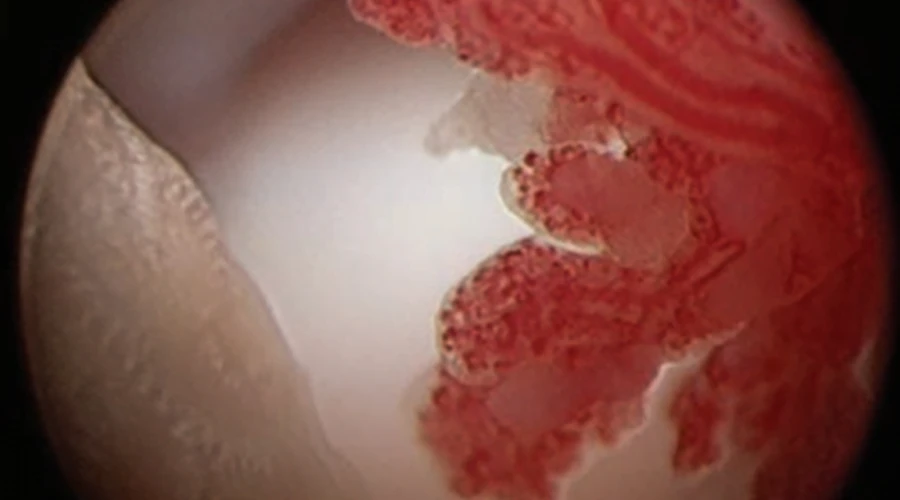Dr. Bob Menardi
Chief Veterinary Officer
Exubrion Therapeutics
Picture your furry best friend bounding across the yard, chasing after a ball with all the energy in the world. But as dogs age, just like humans, they can face health challenges too. One common ailment that plagues our loyal companions is canine osteoarthritis. This condition can be painful and debilitating, and its root lies within a complex web of inflammatory processes. Let’s dive into the world of osteoarthritis, exploring its fiery origins and the role of inflammation, especially synovitis, in the journey towards joint discomfort.
The Inflammatory Culprit: Synovitis
Imagine your dog’s joints are like well-oiled machines. In a healthy joint, there’s a thin layer of tissue called synovium that lines the joint’s interior. Synovium produces synovial fluid, a lubricating substance that helps joints move smoothly. In osteoarthritis, this delicate balance goes haywire. The synovium becomes inflamed, a condition aptly named synovitis. This inflammation can escalate the discomfort, making even simple movements painful for your furry companion.
Macrophages: The Unsung Warriors
Central to the inflammatory battle are cells called macrophages. Think of them as the cleanup crew of the immune system, responsible for detecting and eliminating harmful invaders. In osteoarthritis, they become hyperactive and release inflammatory signals called cytokines. These cytokines spark a cascade of events, turning the joint’s environment into a battleground of inflammation.
The Vicious Cycle
Here’s where things take a nasty turn. Inflammation initially serves as a defense mechanism to repair damaged tissue. However, in osteoarthritis, this process spirals out of control, setting off a vicious cycle. The initial inflammation triggers the release of enzymes that start breaking down the cartilage—the cushioning tissue between bones. As the cartilage deteriorates, more inflammation is triggered, and the cycle repeats, further accelerating joint damage.
Inflammatory Mediators: Fueling the Fire
In this fiery cycle, certain molecules called inflammatory mediators act as the fuel. Tumor necrosis factor-alpha (TNF-α) and interleukin-1β (IL-1β) are two notorious troublemakers. These inflammatory mediators contribute to synovitis, encouraging the release of more cytokines and promoting cartilage destruction. Their presence is like adding more logs to an already raging fire.
Cartilage Destruction: The Consequence
Cartilage is the joint’s shock absorber, allowing smooth movements while preventing bones from rubbing against each other. As inflammation persists, cartilage begins to break down. This degradation exposes the underlying bone, leading to pain, swelling, and stiffness. The once-happy joint becomes a battleground where pain takes center stage.
Breaking the Cycle: Hope is Here
Understanding these inflammatory processes provides a ray of hope for managing osteoarthritis in our beloved dogs. Researchers have developed a treatment for elbow osteoarthritis, called Synovetin OA, that targets the cells that produce specific inflammatory mediators, aiming to disrupt the vicious cycle and alleviate joint discomfort. By neutralizing the excessive activity of macrophages and the cytokines they produce, Synovetin OA can potentially slow down the progression of the disease. See exactly how Synovetin OA works by watching this short video.
If you’d like more information about canine OA and Synovetin OA, email dogsrun@exubrion.com or call 866-DOGSRUN (866-364-7786).




